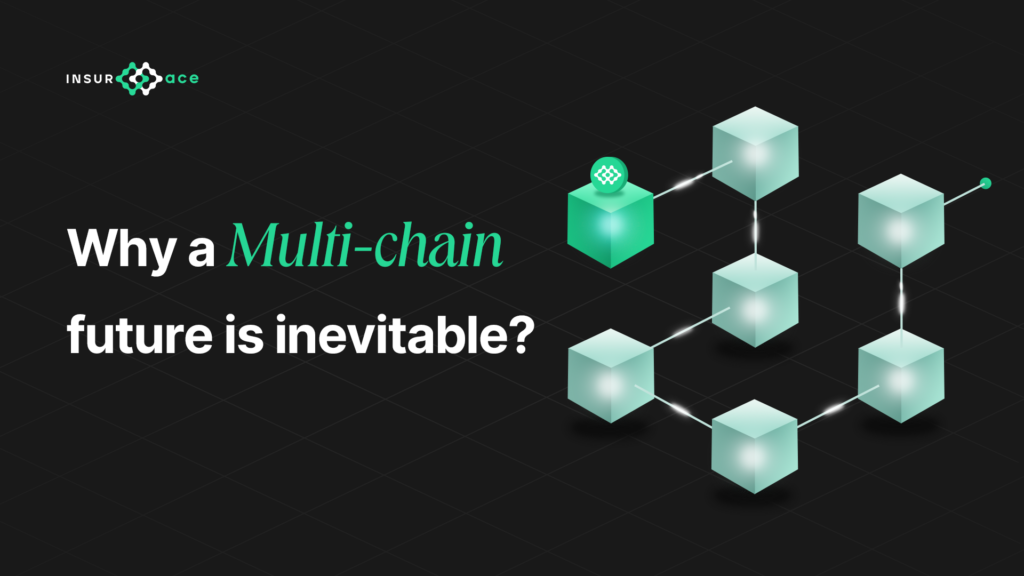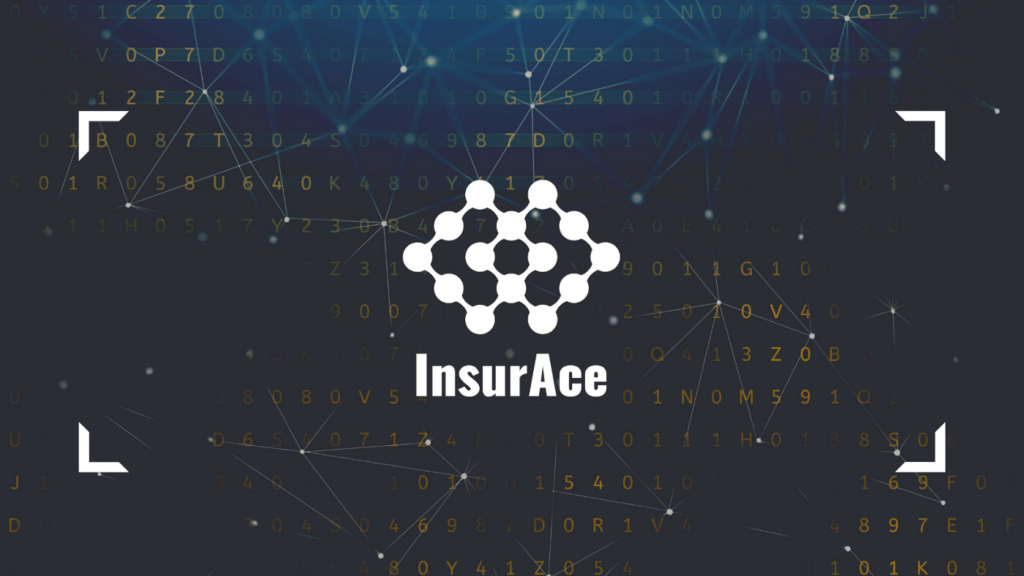Did you know that over 300 million people now use Cryptocurrencies & DeFi protocols around the world? And as the use of crypto becomes mainstream and mass-market adoption of DeFi protocols increases, so do the demands for the integration of various decentralized services and products. For users to interact with products across chains, there is an inherent need to move their digital assets along with them.
In the past, developers have often had to make tough choices on which blockchain network to build their innovative projects, while users also have to choose which “walled garden” to operate in and deploy their digital assets for maximum utility and capital efficiency.
Today, with the advent of Cross-chain bridges, those walls and limitations are being effectively broken down by people who choose to access exciting features across different chains.
Why the Future of Blockchain Technology is Multi-Chain
On the Blockchain, Bridges allow DeFi users to transfer digital assets across technological & infrastructural borders enforced by limitations of each native blockchain.
“No man is an island, entire of itself; every man is a piece of the continent, a part of the main.” — John Dunne.
Just like no country in the world is self-sufficient to survive without the International trade and the complex global supply chain of raw materials and critical services.
Likewise, blockchain networks and Decentralized services often need to interact with products and services hosted on external chains for users to interact with them optimally and efficiently.
Here are the top 3 reasons why many experts and analysts believe that the future of blockchain technology is Multi-chain.
Solving the Blockchain Trilemma
The “Blockchain trilemma” concept was first described by Vitalik Buterin.

He stated that L1 Blockchains networks are often forced to make trade-offs that prevent them from achieving all 3 goals of blockchain technology — Security, Decentralization and Scalability.
- Decentralized — a blockchain with multiple independent validators, creating a system that does not rely on a single central point of control.
- Scalable — the ability for a blockchain system to handle a perpetually growing amount of transactions, without causing network congestion or increasing fees.
- Security — the ability of the blockchain network to operate as expected, free from bugs, and able to constantly develop frameworks to defend itself from malicious attacks, and other unforeseen issues.
And for users to enjoy the utility of all 3 pillars, they mostly have to simultaneously interact with different blockchain networks that offer the right mix of features that they require.
Interoperability
In order to establish a sustainable metaworld of Decentralized services, it is crucial for users to be able to move between the different blockchains. And Bridges exist to facilitate the interoperability of assets and DeFi service hosted across different chains.
Mass-Market Adoption
As the mainstream adoption of cryptocurrencies increases in the future, there will be an increased demand for L1 blockchain systems to handle an increasingly growing amount of transactions. With the inherent limitations built into the major L1 networks like Bitcoin & Ethereum, the multi-chain future is inevitable.
Consequently, for blockchain technology to reach its maximum potential — complement or replace the grossly inefficient traditional finance system — We need to establish innovative token-transfer platforms called Cross-chain Bridges.
On the Blockchain, Cross-chain bridges are functionally similar to the physical bridges that we see in our physical world. But unlike a physical bridge that connects two physical locations, a blockchain bridge essentially connects two blockchain ecosystems. Thereby allowing tokens designed on/for one blockchain to be used on another.
What are Cross Chain Bridges & How Do They Work?
In simpler words, Blockchain bridges allow holders of digital assets to move them across different blockchain ecosystems in order to utilize DeFi services that are built exclusively on each platform. Thus, earning the name – Cross-chain.
Let’s consider this illustration:
You’re from the USA and are planning a trip to China. You have $USD, but you need Yuan to pay bills and make purchases in China. To exchange your $USD for Yuan you have to use a currency exchange platform and pay a small fee.
A similar mechanism applies in the metaworld. If you have AVAX (Avalanche) and you need to make use of Axie Infinity — a Play-to-Earn (P2E) gaming platform that is hosted on the Ethereum blockchain. What do you do?
Like the currency exchange we made from USD to YUAN, we need a mechanism to move our AVX from Avalanche to Ethereum. Cross-chain Bridges make such transactions possible. In this case, Axie Infinity has a native bridge – Ronin – that can transfer assets from Avalanche mainnet onto Ethereum-based native sidechain.
Essentially, blockchain bridges facilitate the interoperability of DApps and DeFi protocols between different blockchains through the cross-transfer of information and assets. However there are a few risks involved.
Five Major Risks That Affect Cross-Chain Bridges
Blockchain bridges are revolutionary platforms that effectively break down walled gardens of layer-1 networks and permit value to flow between different blockchains. However, their design often leaves room for some gaping vulnerabilities. These weaknesses may be exploited at the expense of users.
Below is an overview of major risks involved with cross-chain bridges today:
- Single Point of Failure & Centralization — Cross-chain bridges vary by design. But one of the most popular and widely used types are Centralized bridges.
They rely on one administrator company or a small group of entities/guardians to manage the custody, minting and burning of tokens as well as the verification of transactions. Centralization creates major risks for users, forcing them to entrust their digital assets, albeit momentarily, into the hands of a company.
Without the trustless & decentralized features of L1 networks, Hackers or even malicious insiders may compromise a bridge by taking advantage of a breach of a central node or permissioned network, to steal users’ funds or mint new tokens without equivalent deposits.
- Censorship — Centralized bridges also make it possible for censorship restrictions to be enforced against a user or group of users. And In some cases, there’s also a problem of central custodians losing their private keys, and rendering user funds irrecoverable.
- Poor Liquidity — One of the key conditions for efficient transfer of assets across chains is liquidity. But not every bridge is able to fulfill this requirement between all chains. To be truly liquid, a cross-chain bridge must have asset pools on both the native and non-native blockchains to make the famed lock-mint-burn-release process efficient.
Centralized bridges may have better liquidity, since the controlling entity often has economic incentives to keep asset pools on multiple chains. But this feat is harder to replicate on decentralized bridges. As a result, users may find swapping assets difficult, without sacrificing security & custody.
- Technical Vulnerabilities — Cross-chain bridges rely heavily on the soundness of their underlying smart contract code, and as such do not have the sophisticated security of a larger L1 blockchain network. Consequently, bridges with a poorly written smart contract may be vulnerable to malicious exploits, which presents huge risks for users.
- Obsolescence — The Blockchain world is highly-dynamic. Without a network of developers actively working to secure and update the underlying smart contracts, there is a serious risk of the technical infrastructure of the bridge becoming obsolete and offering weak defenses against more sophisticated hackers.
Final Words — Plugging the Gaping Holes.
In the first quarter of 2022 alone over $1bn worth of digital assets were lost to malicious attacks and hacks on various token bridges. To get more information on these incidents, you can refer to our previous article, Reviewing Prominent Cross-chain bridge hacks.
As the industry stakeholders become aware of these inherent risks, concerted actions are being taken to plug these holes and fortify the security infrastructure of Cross-chain bridges.
- Standard Periodic Smart Contract Audits on Centralized Bridges.
- Increasing Multi-sig requirements for initiating transactions on decentralized Bridges.
- Crackdown on Cash mixers by regulators.
Likewise law enforcement agencies around the world are now putting sophisticated structures in place to make sure that stolen assets can be traced and retrieved.
All of these landmark efforts will help to lay the groundwork for the inevitable Multi-chain future of blockchain technology and Decentralized Finance.


